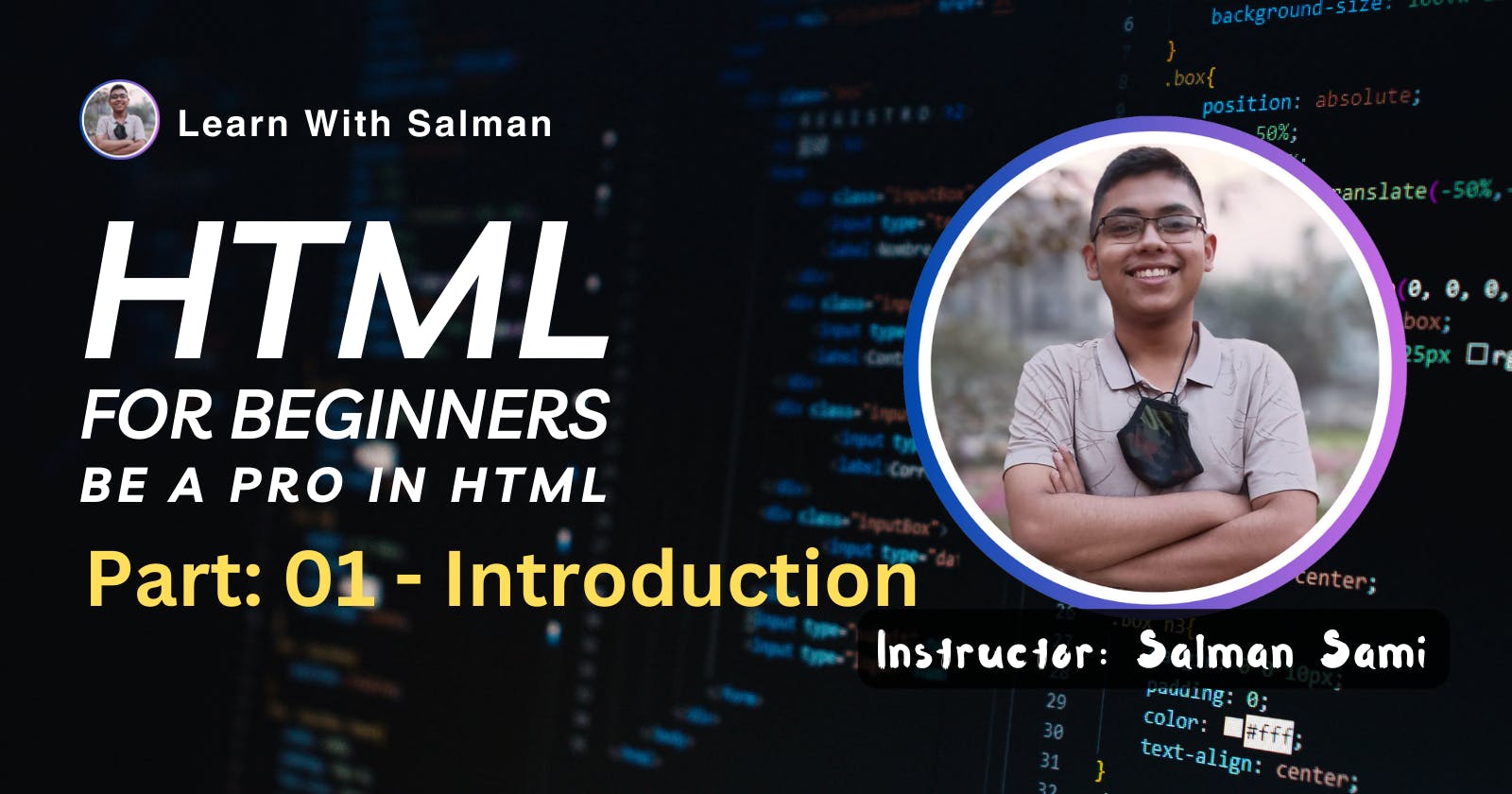Table of contents
- Introduction:
- What is HTML? A Language of Structure:
- A Simple HTML Document: Unveiling the Basics:
- Explaining the Example: A Quick Tour:
- What is an HTML Element? The Building Blocks:
- Web Browsers: The Portal to HTML Magic:
- HTML Page Structure: The Anatomy Unveiled:
- HTML History: Tracing the Evolution:
- Conclusion:
Introduction:
Welcome to the vibrant world of web development! If you've ever wondered about the language that forms the backbone of every website, you're in the right place. In this beginner-friendly HTML tutorial series, we'll embark on an exciting journey from the very basics to becoming a proficient web developer. Let's dive into the fascinating realm of HTML and discover the key to crafting digital masterpieces.
What is HTML? A Language of Structure:
HTML, or HyperText Markup Language, is the foundation of web development. It's a markup language used to structure content on the web, creating the bones of a webpage. Think of HTML as the architect's blueprint, outlining how the various elements of a webpage should be arranged and displayed.
A Simple HTML Document: Unveiling the Basics:
Let's start our journey with a simple HTML document. Don't worry; it's easier than you think. Here's an example to get you started:
<!DOCTYPE html>
<html>
<head>
<title>My First HTML Page</title>
</head>
<body>
<h1>Hello, World!</h1>
<p>This is my first HTML page. Exciting, isn't it?</p>
</body>
</html>
Explaining the Example: A Quick Tour:
Now, let's break down the example:
<!DOCTYPE html>: This declaration defines the document type and version of HTML being used (HTML5 in this case).<html>: This tag marks the beginning of an HTML document.<head>: The head section contains meta-information about the HTML document, such as the title displayed on the browser tab.<title>: The title of the HTML document that appears on the browser tab.<body>: The body section contains the content of the HTML document, such as text, images, and other elements.<h1>: This is a heading element. HTML provides various heading levels, from<h1>(the highest) to<h6>(the lowest).<p>: This is a paragraph element. It's used to structure text into paragraphs.
What is an HTML Element? The Building Blocks:
An HTML element is a building block that defines the structure and content of a webpage. Elements consist of a start tag, content, and an end tag. Some elements, like line breaks, don't have closing tags and are called self-closing tags.
Example of an opening tag:
<p>Example of a closing tag:
</p>Example of a self-closing tag:
<img src="image.jpg" alt="Description">
Web Browsers: The Portal to HTML Magic:
Web browsers act as our window to the digital world, interpreting and rendering HTML to create the visual representation of a web page. Popular browsers like Chrome, Firefox, and Safari provide a seamless experience for users to interact with HTML-based content.
HTML Page Structure: The Anatomy Unveiled:
Understanding the structure of an HTML page is like deciphering the chapters of a book. Each part has a specific role:
<!DOCTYPE html>: Declares the HTML version.<html>: The root element encapsulating the entire document.<head>: Contains metadata and links to external resources.<title>: The title of the webpage.<body>: Holds the content of the webpage, including text, images, and other elements.
Mastering this structure lays the foundation for crafting well-organized HTML documents.
HTML History: Tracing the Evolution:
HTML has undergone several versions, each introducing new features and improvements. The journey began with HTML 1.0 in 1991 and has evolved through HTML 2.0, HTML 3.2, HTML 4.01, XHTML 1.0, HTML5, and continues to evolve.
Conclusion:
Congratulations on completing the first leg of our HTML journey! You've crafted your first HTML document and gained insights into the language's basic structure. As we delve deeper into the world of web development, remember that every line of code contributes to the grand symphony of the internet.
Feel free to share your thoughts and questions in the comments below. Is there a specific aspect of HTML that you find intriguing? What challenges or successes have you encountered on your coding adventure? Let's build this community of learners and explorers together!
Stay tuned for Part 2 of our HTML tutorial series, where we'll explore HTML editors and tools to enhance your coding experience. Until then, happy coding!
